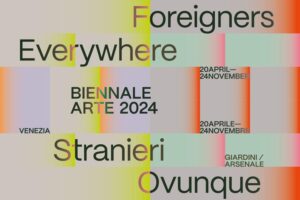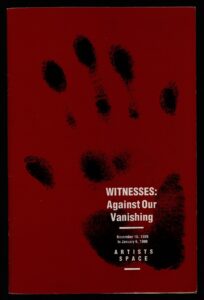In the weekly seminar, one student asked the question about the balance of ethics when practising curation in foreign cultural contexts. It reminds me of the statement made by Adriano Pedrosathe, the curator of the 2024 Venice Biennale (Biennale Arte 2024: Stranieri Ovunque/Strangers Everywhere, 2024) on the February 2nd episode of The Week In Art podcast. The theme of this year’s Biennale has a strong focus on the global south which the emphasis has rendered a kind of uneasiness from the Western press, which such tension was expressed by the host of the podcast by referring to criticisms from the press (The Art News Paper, 2024).
In the podcast, Pedrosathe made a tactful response by saying, “When you are celebrating something, you are not celebrating something else (The Art News Paper, 2024, 26:38).” What he implies is that the exhibition has failed to meet the satisfaction of certain people due to different leverages in terms of ethics. However, it is arguably true that the sensation of disturbance is one of the impacts brought by curatorial activism. As one of the archival exhibitions discussed in Curatorial Activism by Maura Reilly, artist Nan Goldin curated the show titled Witnesses: Against Our Vanishing (1989-1990) as both a memorial of AIDS patients and a celebration of their strength. The presented artworks all evoke corporeal discomfort to some extent, which are direct responses to the inertia the government reacted to in addressing AIDS disease (Reilly, 2018, p.178-183). The bold actions undertaken by Nan Goldin and Adriano all resonate with the curatorial responsibility Reilly discussed in the book, in which she indicates that the curators should be constantly reflective on their position, as well as self-consciousness about inclusions and exclusions in performing curatorial gestures (Reilly, 2018, p.216-217).

Figure 1. Poster of Biennale Arte 2024: Stranieri Ovunque/Strangers Everywhere (2024). Images from the website. See the link: https://www.si.edu/object/witnesses-against-our-vanishing%3AAAADCD_item_12141

Figure 2. Poster of Witnesses: Against Our Vanishing (1989-1990). Images from Smithsonian Institution. See the link: https://www.si.edu/object/witnesses-against-our-vanishing%3AAAADCD_item_12141
Adriano points out at the end of the interview, “Next year, there will be curators celebrating something else (The Art News Paper, 2024, 27:03)”. While it’s hard to adopt a universal ethical system to every curatorial practice and satisfy all the needs, curatorial activism is anticipated to foster polyphonic discourses in the contemporary art field. As Terry Smith once said, contemporary curating “does not follow a set of rules; rather, it adopts an approach arising from an emergent set of attitudes (Smith, 2012, p.29).” Following his viewpoints, rather than disjointing one specific practice from the contemporaneity, the answer to the beginning question I believe relies more on the collaborative actions taken by diverse curatorial practices.
(words: 379)
Reference:
Reilly, M. (2018) “WITNESSING: AGAINST OUR VANISHING,” in Curatorial Activism. United Kingdom: Thames & Hudson, Limited. pp. 178–183.
Reilly, M. (2018) “A CALL TO ARMS: STRATEGIES FOR CHANGE,” in Curatorial Activism. United Kingdom: Thames & Hudson, Limited. pp.216-217.
Smith, T. (2012) ‘What is contemporary curatorial thought?’. Thinking contemporary curating / Terry Smith. New York: Independent Curators International., pp. 29.
The Art Newspaper. (2024) The Week in Art [Podcast]. 02 February. Available at: https://open.spotify.com/show/1tMyVKbZhA8ybRBOrnSUsO (02 February 2024).
Witnesses: Against Our Vanishing (1989-1990) [Exhibition]. Artists Space Gallery, New York, USA. November 16, 1989 – January 6, 1990.


Leave a Reply
You must be logged in to post a comment.